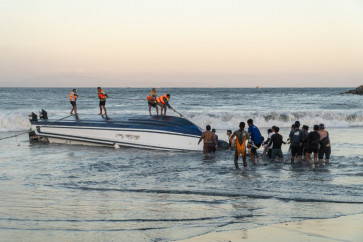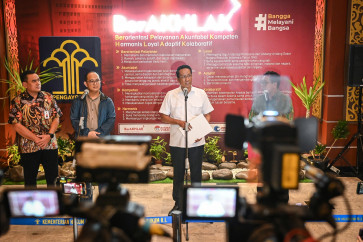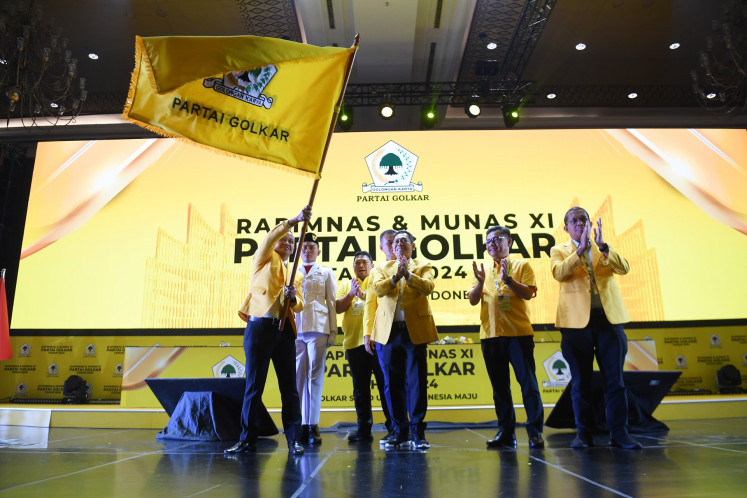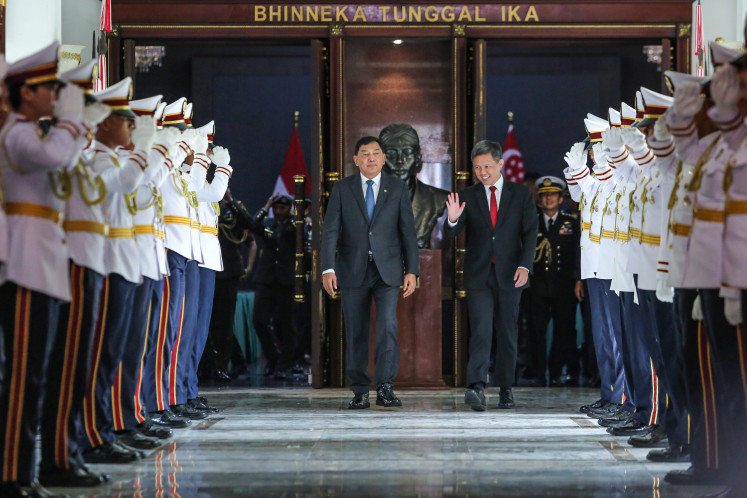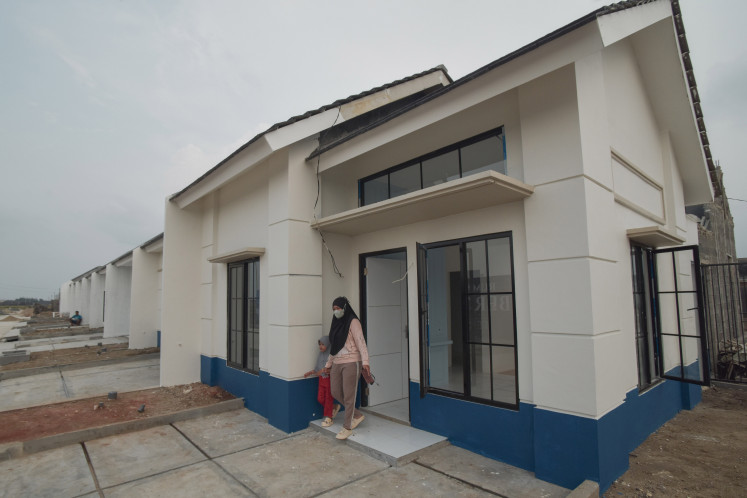Popular Reads
Top Results
Can't find what you're looking for?
View all search resultsPopular Reads
Top Results
Can't find what you're looking for?
View all search resultsQuo vadis Indonesia’s defense system?
When Burma (Myanmar) prime minister U Nu set his foot down at Husein Sastranegara International Airport, Bandung, to attend the Asia–Africa Conference in 1955, he was surprised to see many B-25 aircraft in rows in the airport’s parking area
Change text size
Gift Premium Articles
to Anyone
W
hen Burma (Myanmar) prime minister U Nu set his foot down at Husein Sastranegara International Airport, Bandung, to attend the Asia–Africa Conference in 1955, he was surprised to see many B-25 aircraft in rows in the airport’s parking area. To Wiweko, who welcomed him, he said briefly: “I have never seen so many aircraft together.”
A Dutch magazine Vliegwereld (Aviation World) had also written: “AURI, the most formidable Air Force in Southeast Asia”. In contrast, a magazine published in England, Air Pictorial, ridiculed the Australian government by saying, “The Australian AF is totally lagging behind the AURI!” Today, these have become sweet memories.
Air power is always an interesting subject to debate and simultaneously invites controversy. Air power, also known as “offensive tools”, was since the beginning of its creation known as a tool for attacking. On a battlefield, air power will certainly be used as an instrument for the offensive.
On the other hand, it is obvious that strong air power requires a huge budget. Strong air power can make an air force the prima donna of a country’s armed forces; and being a prima donna will certainly draw envy from various quarters.
The episode of the famous Pearl Harbor attack has clearly demonstrated how air units from the Navy of the Japanese Empire paralyzed the largest American naval base in the Pacific. George and Meredith Friedman in their book The Future of War described Pearl Harbor as “The origin of American Military Failure”. It described, among other things, that by coincidentally sinking US Navy combat ships in the Pacific Ocean, the overall American “way of thinking” about war also vanished.
This was the turning point for the Pentagon, which from then on became more focused on technology-based equipment for war. It was also the reason why America carried out the atomic-bomb attacks on Hiroshima and Nagasaki to end World War II. Similarly, during the 40 years of its Cold War with the Soviet Union, the US relied more on its national main weapon systems, i.e. satellites, radar stations and communications networks, to be used as early warning devices rather than relying only on the political instincts of their leaders.
As time went by, through the experiences gained from each successive war, including Korea, Vietnam and the last Gulf War, where for the first time in the history of mankind its war room, or Central Command and Control, was located in outer-space, the US gained important experience.
The US then arrived at the conclusion that war planning should be conducted in a totally integrated format, containing the elements of land power, sea power and air power. It was no longer enough to rely merely on coordination.
In the meantime, the United Kingdom’s RAF (Royal Air Force), which was established in 1918, recorded a brilliant victory in the arena of air warfare that is remembered as the Battle of Britain. This remains the only case in world history in which aerial warfare was won by the defending side.
The RAF emerged the victor of this pivotal battle against German air invasions. The key to the British victory was its use for the first time of radar equipment, applied to control flight routes, later known as ORSA (Operation Research System Analysis) and its implementation of Unity of Command.
The strength of air power in Indonesia presently involves the Army, Navy, Air Force and National Air Defense Command, while the elements of air power strength consists of the Air Force, National Air Defense Command, Army air component, Navy air component, law enforcement air component, customs air component and a civil air component.
Meanwhile, technological advancements have changed human beings’ fundamentals. We cannot stand idly, by as new ideas from the younger generation must be encouraged to be brought forward.
Air warfare tactics and techniques will always improve their technological quality. One war expert has stated that: “Nothing will ever be the same again”. This is a great challenge and therefore requires the involvement of the National Aeronautics and Aerospace Commission which can formulate policies regarding strategies in military and civil aviation for the Republic of Indonesia.
Simultaneously, they will need to consider the governing of our airspace sovereignty in order not to be managed by foreign civil authorities and should be administered in accordance with national interest.
Henceforth, this will not just involve regulating air operators or the number and types of aircraft, but will extend up to include navigational instruments, Air Traffic Control and radar in such a way as to avoid duplication between civil and military purposes.
Furthermore, it is necessary to have a National Defense Commission which could reform the defense and security systems of a vast archipelagic country like Indonesia. There are many critical border areas with neighboring countries that need serious attention as they are located in maritime territory.
We have read lots of news on territorial disputes, such as instances of apprehension about Indonesian fishing vessels within Indonesian territory by foreign authorities. Learning from such incidences, it is therefore urgent to have such a reliable naval strength navigating our maritime areas.
By comprehensively rearranging these two commissions — the National Aeronautics and Aerospace Commission and the National Defense Commission — we can expect our national air strength, particularly the Air Force, to be able to perform missions bestowed upon it by the nation. Only then can we discuss in detail about the primary weapons system that would fulfill the requirements as laid out in the mission statement in order to defend and secure our archipelagic territory.
Naval strength, as a guardian of our maritime territory in border areas, will not be effective if it is not accompanied by strong air power. The Air Force, therefore, must always be at the forefront of our national defense and security systems in guarding the honor and sovereignty of our Motherland. “Be the Great Wing of Motherland, Swa Bhuana Paksa!”
Happy anniversary to the Indonesian Air Force!
The writer, chairman of CSE Aviation, is a former Air Force chief of staff.



